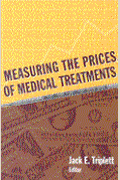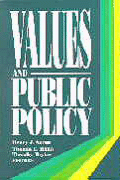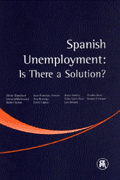This post has been edited to correctly state the findings of the paper by Jung Sakong.
What’s the latest thinking in fiscal and monetary policy? The Hutchins Roundup keeps you informed of the latest research, charts, and speeches. Want to receive the Hutchins Roundup as an email? Sign up here to get it in your inbox every Thursday.
Individuals report lower desired work hours during the pandemic
The labor market is tighter than suggested by the low unemployment and labor force participation rates, say Jason Faberman of the Chicago Fed and Andreas Mueller and Ayşegül Şahin of the University of Texas at Austin. Comparing the number of hours individuals want to work to those they actually work, they find that desired work hours declined 4.6% among all individuals between February 2020 and the end of 2021, nearly twice the 2.3% decline in labor force participation. These trends are driven primarily by individuals not in the labor force and part-time workers changing the number of hours they are willing to work, rather than broad changes in desire to enter the labor force at all. They are consistent across most demographic groups, with larger declines among those without a college degree. Notably, the authors do not find that desired hours declined significantly more for women than men, despite documented gender disparities in the child-care burdens brought about by COVID-19. The authors also show that workers with jobs involving some degree of social contact saw particularly large reductions in desired work hours—but those with low-contact jobs actually increased their desired hours worked.
The natural rate of unemployment increased during the pandemic
The unemployment rate spiked at the onset of the COVID-19 pandemic before falling back to pre-pandemic levels. The natural rate of unemployment—the rate that is consistent with full employment and stable inflation—had a longer-lived response, find Richard K. Crump of the Federal Reserve Bank of New York and co-authors. The authors estimate that the natural rate of unemployment rose from 4.5% to 5.9% over the 2019-2021 period, with the estimate driven by strong wage growth rather than a rise in inflation expectations or the inflation level. Modeling the Phillips curve relationship— the trade-off between inflation and labor market slack—the authors estimate that the deviation of the actual unemployment rate from its natural rate will push inflation 0.5 percentage point above its long-run trend till the end of 2023, even if long-run inflation expectations remain well-anchored. Recovery of labor force participation could help alleviate wage pressures and bring down inflation, though such changes will likely occur over a long horizon, the authors conclude.
Poorer households are more likely to ‘buy-high-sell-low’
In the U.S., wealth is more unevenly distributed than income, perhaps because the rate of return on assets is higher for wealthier households. Using data on the housing market, Jung Sakong of the Chicago Federal Reserve Bank finds that poorer households are more likely to buy a home during an economic boom—when expected returns are lower—and sell after a bust, when expected returns are higher. According to the author’s calculations, a household that is 10 percentile higher in the net worth distribution is associated with about 12 basis-point higher annual expected return. Consistent with these patterns, geographic areas with higher housing market volatility have larger differences in wealth inequality relative to income inequality. He concludes that government policies intended to increase wealth by encouraging homeownership could backfire.
Chart of the week: Mortgage rates climb
Chart courtesy of The Wall Street Journal
Quote of the week:
“In my view, conditions in the labor market have been and are currently consistent with the FOMC’s goal of maximum employment, and as such, my focus has been on the persistently high inflation… I support raising the federal funds rate at our next meeting in March and, if the economy evolves as I expect, additional rate increases will be appropriate in the coming months. I will be watching the data closely to judge the appropriate size of an increase at the March meeting. In early March, the FOMC will finally stop expanding the Federal Reserve’s balance sheet. The resulting end of our pandemic asset purchases will remove another source of unneeded stimulus for the economy. In the coming months, we need to take the next step, which is to begin reducing the Fed’s balance sheet by ceasing the reinvestment of maturing securities already held in the portfolio. Returning the balance sheet to an appropriate and manageable level will be an important additional step toward addressing high inflation,” says Michelle Bowman, Federal Reserve Board Governor.
“I expect that these steps will contribute to an easing in inflation pressures in the coming months, but further steps will likely be needed this year to tighten monetary policy. Looking beyond this spring, my views on the appropriate pace of interest rate increases and balance sheet reduction for this year and beyond will depend on how the economy evolves. I will be particularly focused on how much progress we make on bringing down inflation. My intent would be to take forceful action to help reduce inflation, bringing it back toward our 2 percent goal, while keeping the economy on track to continue creating jobs and economic opportunity for Americans.”
The Brookings Institution is financed through the support of a diverse array of foundations, corporations, governments, individuals, as well as an endowment. A list of donors can be found in our annual reports published online here. The findings, interpretations, and conclusions in this report are solely those of its author(s) and are not influenced by any donation.












Commentary
Hutchins Roundup: Work hours, natural rate of unemployment, and more
February 24, 2022